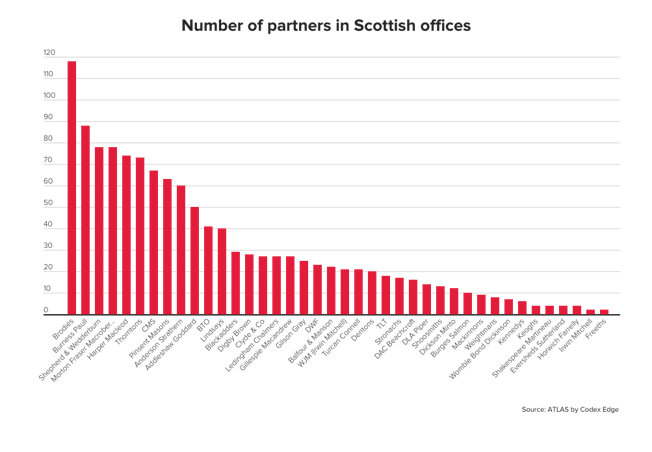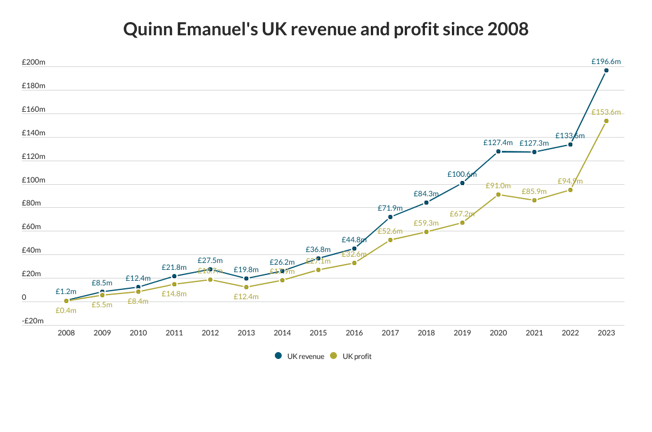An Enron report by the Joint Committee on Taxation presented to US Congress this month is damning to all involved. Although perhaps not as anxious as some of the investment banks, certain law firms must be hot under the collar as to what may follow from its findings.
Akin Gump Strauss Hauer & Feld, King & Spalding, McKee Nelson Ernst & Young, Shearman & Sterling and Vinson & Elkins are the firms most firmly placed in the spotlight; but Clifford Chance and Freshfields (now Freshfields Bruckhaus Deringer) also get a mention.
Criticised in the report is the “complicity” between advisers and clients and the quality of some of the external legal advice given.
The report focuses purely on Enron's tax status – and the findings are shocking. It reveals that Enron paid no federal income tax from 1996 through 1999, $63.2m (£39.6m) in 2000 and then once again nothing in 2001.
Two areas of Enron's dealings come under particular scrutiny: the use of the corporation's tax shelter arrangements, offshore entities and special purpose entities (SPEs); and second, the compensation of Enron employees that were affected. It is the former matter in which external legal advisers played a role.
From the mid to late 1990s there was enormous pressure on Enron to achieve its financial objective of $1bn (£626.8m) of net income by 2000. More importantly, the company needed cash to service its increasing debt load. Accordingly, it developed a number of strategies to accomplish its financial objectives.
“Beginning in 1995,” the report states, “Enron, in consultation with outside tax advisers, engaged in a series of structured transactions that were designed to satisfy the literal requirements of corporate tax laws, yet produce results that were not contemplated by Congress and not warranted from a tax policy perspective.”
It was not long before management realised the financial opportunities that could be gained through the tax department.
“In effect, the tax department was converted into an Enron business unit, complete with annual revenue targets,” the report says. “The tax department, in consultation with outside experts, then designed transactions to meet or approximate the technical requirements of tax provisions with the primary purpose of manufacturing financial statement income.”
A presentation on one such transaction entitled 'Show me the money!' was a prime example of the business strategy that lay behind the group's work.
However, a bona fide business purpose (that is, a purpose other than to secure favourable tax and accounting treatment) was either lacking or erroneous in many of the transactions. “Nearly all of the reviewed transactions are vulnerable to attack under judicial or administrative anti-abuse and anti-avoidance doctrines,” the report claims.
Enron required counsel for the transactions to provide a 'should' level of opinion – ie the transaction 'should' comply with all relevant legislation.
The report questions the reliability of such opinions. “Often, these assurances were based on highly technical interpretations of the law even though the transaction produced surprising and questionable outcomes,” the report says on such opinions. “Many of the opinions hinged on determination that the transaction had sufficient business purpose. Enron represented the business purpose of the transaction, and Enron's counsel did not bother to look beyond the representation.”
It also slams what it describes as the “incestuous relationships” that developed between Enron and its advisers. “For many transactions Enron picked from the same small pool of outside advisers. In some cases, if one adviser from the pool was not advising Enron in a particular deal, that adviser advised the other party (the promoter) to the transaction.”
This led to questionable advice, the report concluded. “Many tax-motivated transactions cannot occur without the complicity of a tax adviser who is aware of all the relevant facts, yet chooses to ignore them and instead relies on the taxpayer's purported factual representations.”
A couple of particular opinions received a roasting from the committee. For Project Apache, main adviser Shearman & Sterling was paid $1.1m (£689,500). The joint committee found parts of the opinion letter “troubling”. “The joint staff believes that, at a minimum, the opinion letter reflects an unquestioning reliance on company representations as to business purpose as well as failure to look beyond isolated parts of an overall transaction to evaluate it in its totality,” said the committee.
The committee described Akin Gump's $1m (£627,000) opinion on Project Steele as “disturbing”, adding that the reasonableness and objectivity of the advice given could be “called into question”.
But these were not the only two firms to get bad press in the report. On a number of occasions the report questions the integrity of the legal opinion, especially in regard to the “business purpose” given for the transaction.
“Troubling is the lack of responsibility or independent assessment that some advisers showed in evaluating Enron's stated business purpose,” it says.
It also claims that a statement by Joseph Dilg, the managing partner of Vinson & Elkins, made before the House Committee on Energy and Commerce, “suggests that this minimal level of review perhaps was not unintentional”.
Such questionable techniques adopted by Enron and its advisers did not go unnoticed by everyone.
In August 2001, Enron vice-president Sherron Watkins sent a memo outlining numerous concerns regarding accounting issues and suggesting that the company retain a law firm (other than Enron's general counsel Vinson & Elkins) to investigate particular transactions.
Eventually, Vinson & Elkins was instructed to carry out the investigation.
The findings were consistent with the company's overall approach. Vinson & Elkins concluded that “facts disclosed through our preliminary investigation do not, in our judgement, warrant a further widespread investigation by independent counsel and auditors”. Words no doubt the firm has lived to regret.
Although the committee reviewed most advice given to Enron by external advisers in this report, it did not determine whether violations of tax statutes relating to the advisers actually occurred. It did, however, draw the following conclusion: “The Treasury Department and IRS [Internal Revenue Service] should have a broad array of sanctions to impose on advisers who render such opinions, and they should impose stiff sanctions on these advisers.”
And the final conclusions make for bleak reading. “Until the costs of participating in tax-motivated transactions are substantially increased, corporations such as Enron will continue to engage in transactions that violate the letter of the spirit of the law,” reads the report.
And no doubt the law firms will continue to accept their instructions.
Tanya (1995) 66 66 66 66 Arthur Arthur N/A 0.05/0.03
Andersen Andersen
Valor (1996) 82 82 82 Arthur Arthur N/A 0.1/0.06
Andersen Andersen
Steele (1997) 65 83 39 78 Bankers Akin Gump 1m/627K 11/6.9
Trust Strauss
Hauer & Feld
Teresa (1997) 226 257 -76 263 Bankers King & 1m/627K 12/7.5
Trust Spalding
Cochise (1998) 101 143 – 141 Bankers McKee Nelson 1.023m/641K 16/10
Trust Ernst & Young to date
Apache (1998) 51 167 51 167 Chase Shearman & 1.109m/695K 15/9.4
Manhattan Sterling and and
Freshfields 300K/188K
Tomas (1998) 37 113 95 109 Bankers Akin Gump 813.7K/510K 14/8.8
Trust Strauss Hauer
& Feld
Condor (1999) 88 328 0 332 Deloitte Vinson & Elkins 1.2m/752.2K 10/6.3
& Touche
Valhalla (2000) 16 64 0 0 Deutsche Vinson & Elkins N/A –
Bank and Clifford
Chance Pünder
Tammy I (2000) 406 0 414 Deloitte Vinson & Elkins 698.8K/438K 9/5.6
& Touche and Akin Gump and
Strauss Hauer 235.2K/147.4K
& Feld
Source: Joint Committee on Taxation Report





























